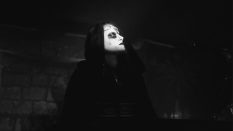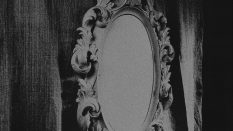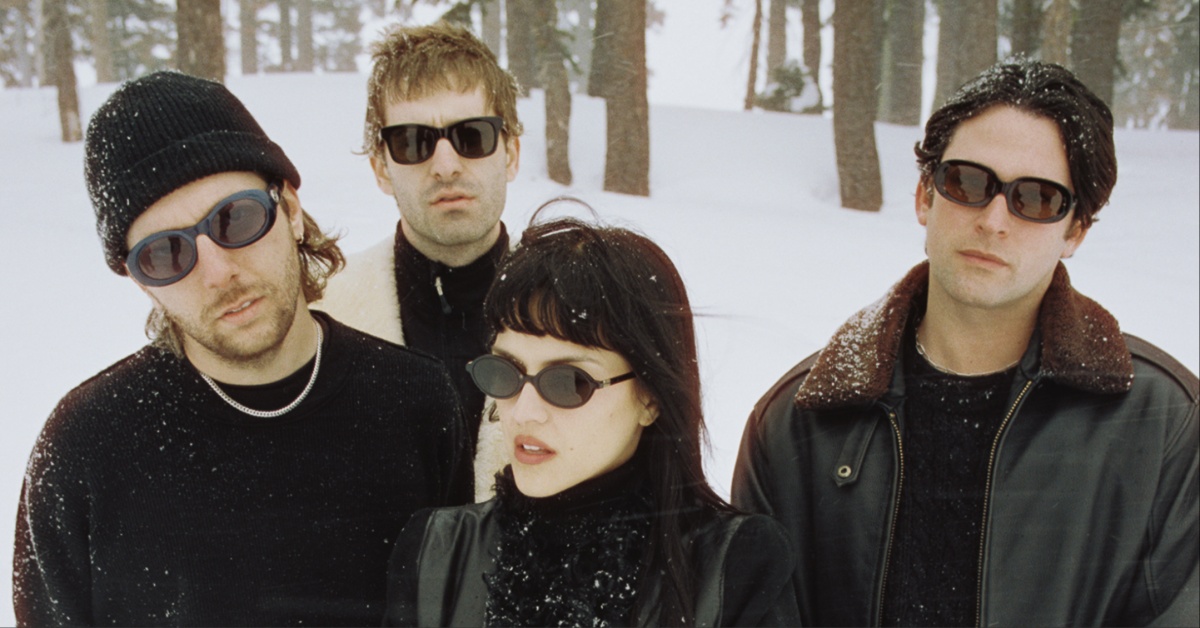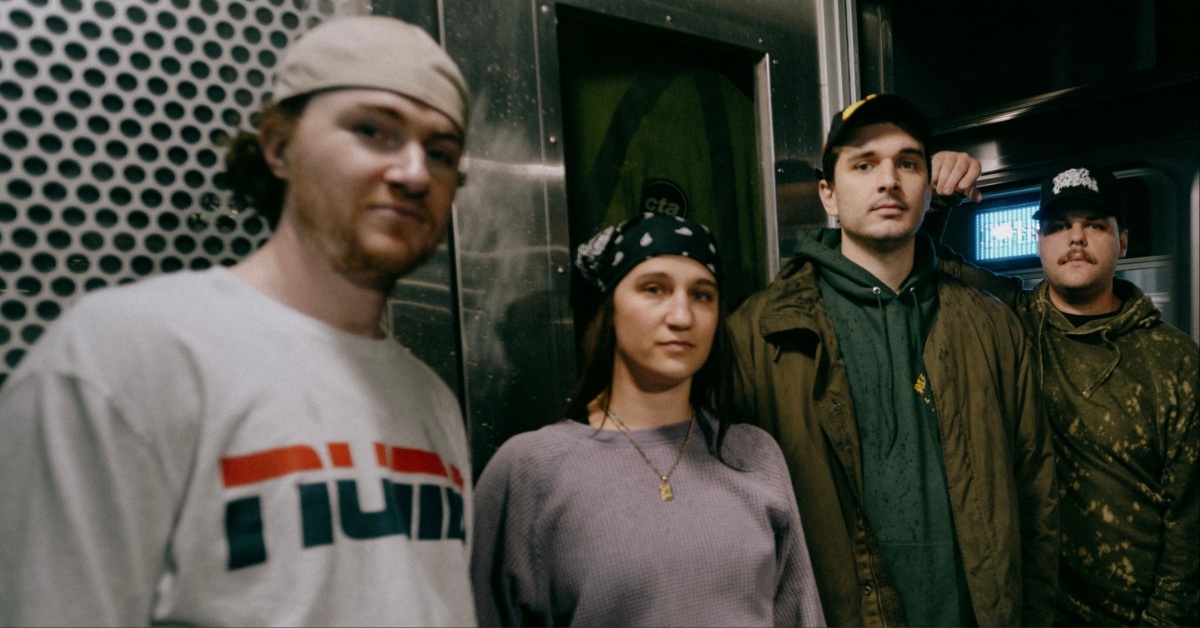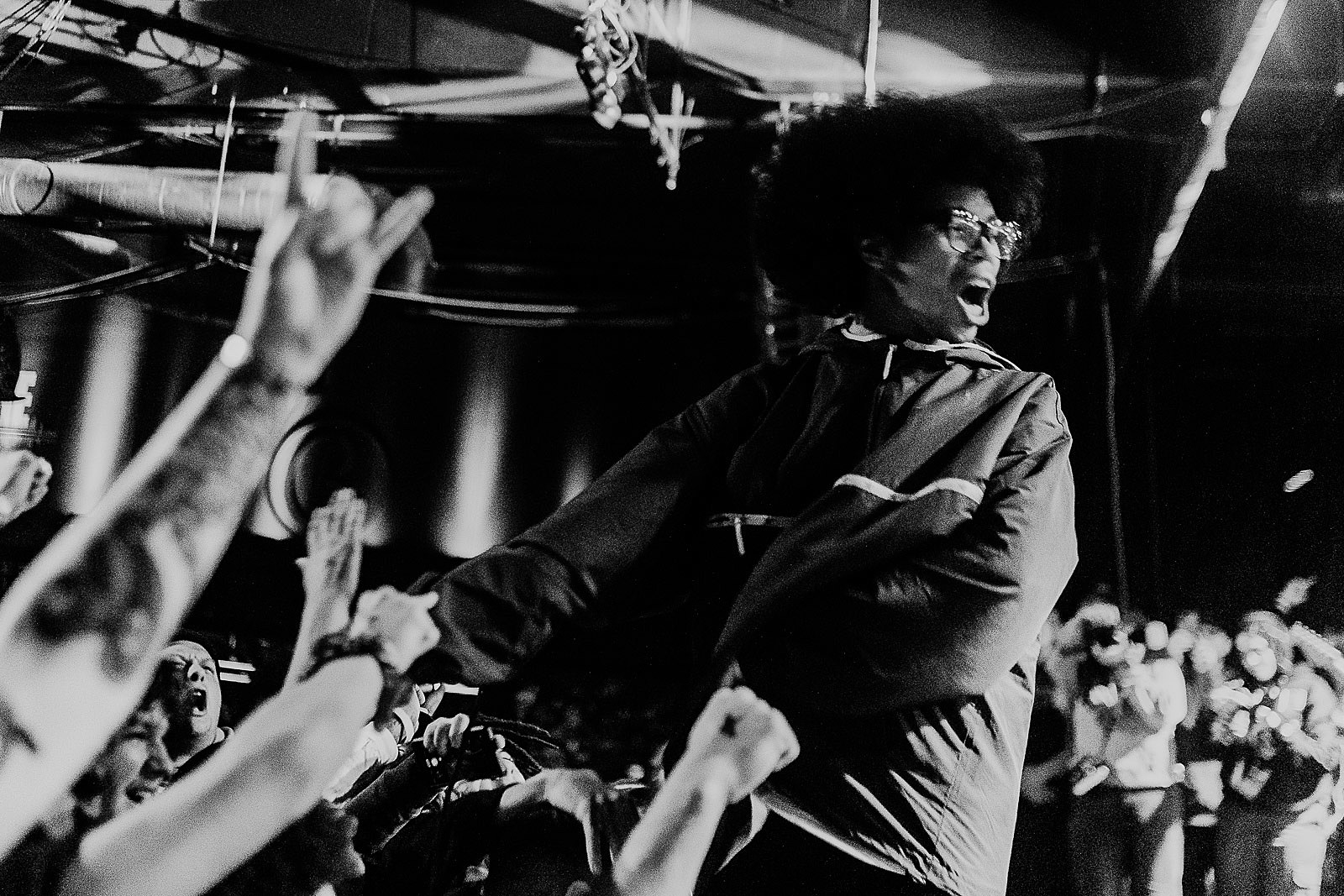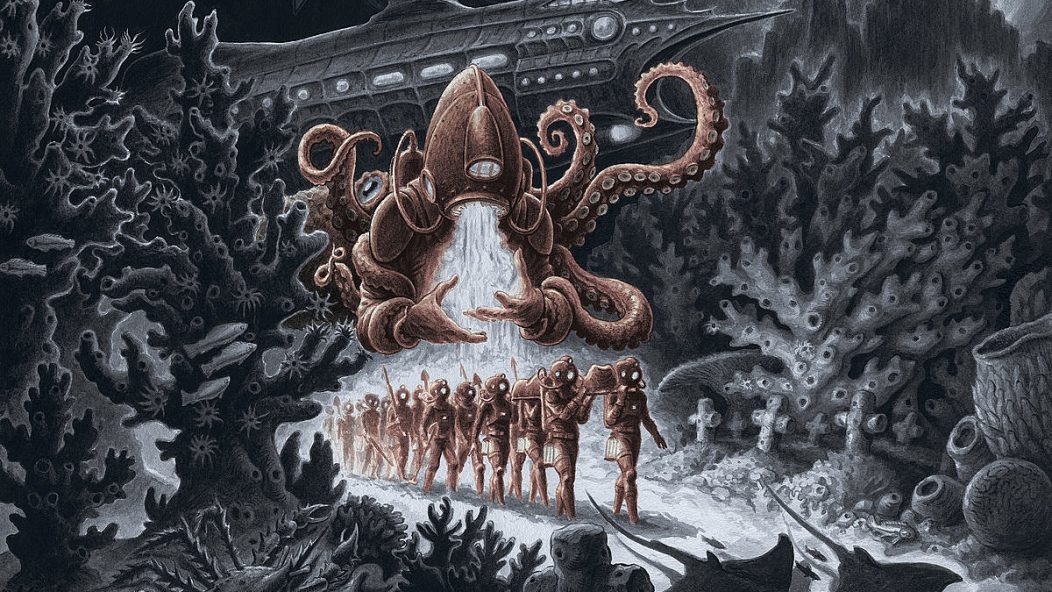
AHAB Reset Their Sails For "The Coral Tombs" (Interview)
Following their critically acclaimed 2015 release, The Boats Of The Glenn Carrig, the German self-proclaimed nautical doom masters Ahab have reemerged after eight long years with its fifth full-length album The Coral Tombs. Its seven expansive tracks are the perfect balance between the band’s early roots and their newer, more exploratory doom/sludge direction.
Inspired by author Jules Verne’s maritime novel masterpiece, 20,000 Leagues Under The Sea, The Coral Tombs takes the listener on a dark musical journey down to the ocean’s depths. Along the way, there are several surprises, with moody, clean vocals, and melancholic and melodic segues that keeps the listener on the edge of his or her seat as if they were watching an epic cinematic masterpiece. Featuring vocalist/guitarist Daniel Droste, drummer Cornelius Althammer, guitarist Christian Hector, and bassist Stephan Wandernoth, AHAB is in full control of its career.
Vocalist/guitarist Daniel Droste recently spoke with us through e-mail about the formation of the band, why it took so long to release the new album, celebrating its 20th anniversary as a band next year, and more.
…
…
Talk about the formation of the band and what influenced you to write about nautical themes?
Ahab was founded by Chris and me as a funeral doom studio project. In the early 2000s we’d visited some editions of a small doom metal festival in southern Germany called Doom Shall Rise, and we discovered many new doom bands at the time. My first love with doom metal was Anathema’s Pentecost III, which I discovered back as a teenager during a holiday in England. I fell in love with its monotony and heaviness, but couldn’t find any other doom band that attracted me as much. Those bands playing at Doom Shall Rise were mainly traditional doom bands, but we also discovered funeral doom at that time. There was this monotony again I once loved on Pentecost III but combined with a really dark atmosphere, and I was very curious to compose with these new tools. I played in a local death metal band back then and was searching for a new musical challenge besides. So I recorded a funeral doom song with sea related lyrics with the intention to record a little demo CD. Without knowing about my song, Chris told me about his plan to form a funeral-doom band to compose Melville’s Moby Dick. I liked the concept, he liked the song I recorded so we decided to join forces and founded Ahab.
The new album, The Coral Tombs, is inspired by 20,000 Leagues Under the Sea. Is the album’s concept based on the original movie or Jules Verne’s book and what captured your imagination to take on this concept?
Jules Verne’s story about Nemo and the Nautilus is the most famous nautical novel next to Melville’s Moby Dick. We already talked about composing “20000 Leagues…” a few years ago. I only knew the movie back then, which I absolutely loved as a kid, but I couldn’t imagine the story as a basis for heavy riffs and grunts. When we finally read the book, we realized its full potential. With a focus on the mysterious captain Nemo and his view on the world above, the story got another sub level for composing and by that got very interesting as a template for us to work with.
How much did you keep to the original story and how much was artistic/creative license to tell the story in song form?
It’s almost impossible to retell a novel with all its details on just one album. Chris who is responsible for the lyrics in AHAB focussed on the most iconic scenes of the story, and retold them in his own words but quoted as well. He always makes notes when he’s reading, collecting scenes about Nemo’s character and his worldview to process them in his lyrics.
This is your first full-length album in eight years, what took so long after the awesome The Boats of the Glen Carrig?
It was definitely not our plan to have such a long gap this time. Until the release of our fourth album we somehow managed to release an album in a three-year cycle, which wasn’t planned either. Almost everyone in the band had kids during the last years, beginning with the birth of my daughter in 2016. So, all of us had their hiatus from AHAB to concentrate on the new family situation. We never got any pressure from our label. They asked if we’re going to book a studio from time to time but never pressed us to release anything. The interest in Ahab didn’t decrease during these years, we got more offers to play live than we could accept… and with two good friends helping us out as session musicians if necessary, it was possible for us to concentrate on playing live even when some of us weren’t available. When all four of us met, it was mainly for rehearsing the live set. We also jammed together from time to time, but without having a lyrical template at that time, these demo versions we recorded were nice, but nothing more. Ideas that were composed before having a lyrical template help to reorient ourselves musically, but usually don’t end up on a record. As soon as we have a template, we’re actually quite fast in composing the song material. Stephan and I met during the first months of the pandemic and composed the structures for the first three songs in two sessions. Considering that, the composing of The Coral Tombs didn’t take longer than its predecessors, we just started way later.
I feel that you weren’t afraid to experiment and surprise listeners on The Coral Tombs.
The tracks are the perfect balance between the band’s early roots and your newer, more exploratory doom/sludge direction. What are some of these musical elements that you wanted to explore?
We’ve actually never composed with the intention to include specific new elements to our sounds in advance. Our sound has its roots in contrasts such as heavy riffing and mellow clean guitars, grunts and clean vocals, but besides that, we’re very open minded when it comes to adding new elements on top of that. A new novel we’re composing is always based on these roots, flavored by our personal musical taste at that time and shaped by the story we’re composing. We compose each song step by step. The overall picture that unfolds when all songs are recorded in the studio is always a little surprising for me as well.
“Prof. Arronax’ Descent Into The Vast Oceans” has such a contrast of styles that works so well. Was this the first track you wrote and was it the blueprint of what follows the storyline?
Well, it actually wasn’t. I really like contrasts within music, because those usually emphasize each other. The first clean part was something I composed quite early when I was jamming at home. It had this beautiful underwater scene in mind when Arronax first sees these wondrous depths with his own eyes. The fast opening part just happened more or less during a rehearsal. We met to arrange a song, but that led to nothing and during a break I just played that opening riff for fun. Our drummer joined me immediately with blast beats and the longer we played, the more we enjoyed it. We recorded what we’ve played, with no further intention, just to store that idea. A few rehearsals after we stumbled across that recording again and someone mentioned that this would be a fulminant opening for our record after 8 years of silence. We liked the idea of doing the unexpected and also invited Chris Noir of Ultha for guest vocals to emphasize this little shocker even more.
The whole album resembles a cinematic soundtrack that keeps listeners on the edge of their seats. What types of things were you conscious of while crafting this musical journey?
First of all, I was aware that this story has an underwater setting, in contrast to all other stories we’ve composed so far. One element I always wanted to have on a record is a repeating main theme opening and closing the album. I’m a big Steven Wilson fan and I loved the way he did that on Hand.Cannot.Erase. Assembling such a main theme is a stylistic device always used on soundtracks, and by its placement framing the record it creates a feeling of closing a circle. I cannot analyze all the steps that may have led to a more cinematic result. The fact that this is the first story, I also knew from the movie next to the book, had for sure an important impact on the songwriting as well.
The artwork by Sebastian Jerke captures the theme and mood perfectly. The lyrics to the title track match the scene on the cover. Since Sebastian has created the last few AHAB covers, is there a camaraderie/familiarity with him? What type of direction did you give him or did you provide him with reference material or key words?
Although we don’t meet Sebastian while crafting an album, it definitely feels familiar to work with him. I only met him once or twice, and besides being very talented, he is a very nice guy as well, and it’s always a pleasure working with him. We discussed the main elements of the cover such as the painting style within the band first. We also decided that we wanted to have a visual contrast to the colorful artwork of our last album with mainly black grayish textures and one additional color to highlight main elements. Sebastian delivered tons of sketches and there was a frequent exchange between him and us. Although we had a clear vision of the artwork, Sebastian always had enough space for creativity. In my opinion it’s that balanced cooperation that leads to great artworks since we started working together.
For the production, you also again used Jens Siefert, who oversaw your previous albums. What were you wanting to achieve sound wise or with certain tones, moods, atmospheres?
We once decided to work with Jens Siefert because we really liked the sound he achieved with his analogue equipment. I also had the possibility to compare a digital mix to an analogue mix he did for The Coral Tombs and the difference is really huge. I’m not a recording gear nerd so I have no idea what’s technically different, but the analogue mix sounded so much bigger, wider and more dynamic. Although we were very satisfied with the sound of The Boats Of The Glen Carrig, we wanted to achieve a dirtier guitar tone for The Coral Tombs. We spent many hours checking different amps, combinations of amps and cabinets and finally recorded three separate tracks for each rhythm guitar. Jens is a gear nerd and really talented when it comes to stacking guitar tones.I remember when he came up with the idea to record one track with this tiny battery driven amplifier which really sounded shitty and almost broken on its own… but in combination with the recorded tracks it just added that little extra dirt the rhythm guitars needed.
You will celebrate 20 years as a band next year, that’s a significant accomplishment. What do you look back at fondly in the early days or notice differently compared to now?
It’s unbelievable how much attention we got back then and now, especially if you consider that Ahab only was planned as a studio project in the beginning. The reactions to our debut album were insane, and even now after all these years of silence there are still lots of people all over the globe supporting us. I remember when we got our first offer to play live, which was at the Doom Shall Rise festival I mentioned above. I was more than excited and thought it just couldn’t get bigger than that for us. Cornelius joined the band on drums at that time, and that was the moment when the project finally developed into a band. Shortly after we parted ways with our bassist and Stephan joined the band. We’ve been playing in this constant line-up for more than 15 years now. We’re still not tired of writing new music and to sail to new shores, and we’re looking forward to our first appearance in the US for Maryland DeathFest in 2024.
What’s next, what lies ahead for the band, including touring plans for 2023?
We’ll play some festivals over in Europe such as Damnation Fest and Summer Breeze, and some shows in Germany as well. We are still planning additional dates at the moment which we hopefully can publish during the next few weeks.
…
The Coral Tombs was released on January 13th, 2023 via Napalm Records.






